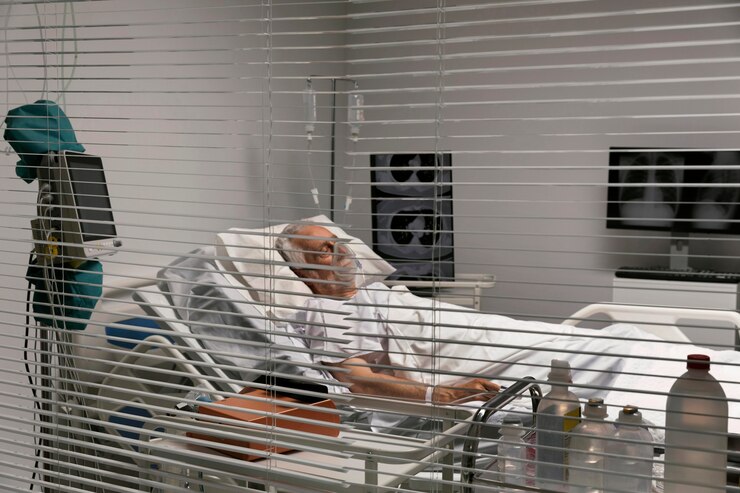Healthcare advancements have always been at the forefront of enhancing patient outcomes and experiences. One of the key innovations contributing to this is the development of modern surgical hospital beds. Designed with cutting-edge technology, these beds provide unparalleled support for patients undergoing surgeries and those recovering from medical procedures. Surgical hospital beds for the patient? They embody a significant shift from traditional hospital furniture, offering a comprehensive solution that combines comfort, functionality, and patient safety.
Evolution of Surgical Hospital Beds
The concept of hospital beds has evolved considerably over the decades. Early designs were simplistic, prioritizing basic needs without accommodating the complexities of medical care. However, as healthcare advanced, so did the requirements for more sophisticated solutions. Surgical hospital beds now incorporate ergonomic designs, motorized adjustments, and integrated systems to cater to both patients and healthcare providers.
Modern surgical beds are designed to address the challenges faced during and after surgical procedures. They are engineered to reduce the physical strain on patients and caregivers while ensuring that every medical necessity is within reach. Features like adjustable height, tilt capabilities, and modular components have transformed the recovery environment, making it more conducive to healing.
Key Features of Modern Surgical Beds
- Ergonomic Design: Modern surgical hospital beds prioritize patient comfort and caregiver efficiency. The ergonomic design reduces the risk of bedsores and enhances overall comfort. Adjustable headrests, lumbar support, and foot sections ensure that the patient can rest in an optimal position.
- Motorized Adjustments: Advanced motorized systems allow for precise adjustments of bed height and position. This is particularly beneficial for surgical patients who may require specific postures for recovery. Caregivers can easily adjust these settings with minimal effort, reducing the risk of workplace injuries.
- Integrated Monitoring Systems: Some hospital beds are equipped with built-in sensors and monitoring devices. These systems can track vital signs, alerting medical staff to any sudden changes in the patient’s condition. This integration reduces the need for separate monitoring equipment, streamlining care processes.
- Pressure Redistribution Technology: Modern surgical beds feature pressure redistribution technology, which minimizes prolonged pressure on specific body areas. This feature significantly enhances patient comfort and prevents complications.
- Hygiene and Infection Control: Many surgical beds now include antimicrobial surfaces and seamless designs that make cleaning more efficient. These features are critical in maintaining hygiene standards and reducing the risk of hospital-acquired infections.
- Mobility and Accessibility: Advanced hospital beds come with wheels and locking mechanisms, making it easier to transport patients within the hospital. Additionally, features like collapsible side rails and rotating mattresses improve accessibility for patients with limited mobility.
Benefits for Patients and Caregivers
The advanced features of surgical hospital beds directly translate into numerous benefits for both patients and healthcare providers.
- Enhanced Patient Recovery: Surgical beds are designed to promote faster recovery. By enabling precise positioning, they ensure optimal blood circulation and reduce discomfort, which is essential for healing.
- Improved Safety: Safety features like adjustable side rails, fall-prevention sensors, and anti-skid mechanisms significantly lower the risk of accidents. These enhancements are particularly beneficial for elderly patients and those with limited mobility.
- Ease of Caregiving: For caregivers, modern hospital beds reduce the physical demands of patient care. Height adjustments and remote controls minimize the need for manual lifting, making caregiving less strenuous and more efficient.
- Cost-Effectiveness: Although modern surgical beds are an investment, their long-term benefits outweigh the initial costs. Improved patient outcomes and reduced complications lead to shorter hospital stays and lower overall healthcare costs.
Technological Innovations Driving Change
Several technological advancements have propelled the evolution of surgical hospital beds. These innovations have made them an indispensable asset in modern healthcare facilities.
- Internet of Things (IoT): IoT-enabled beds can communicate with other medical devices, creating a seamless network of healthcare solutions. For instance, a bed can send alerts to a nurse’s station when a patient attempts to move unexpectedly.
- Artificial Intelligence (AI): AI integration allows beds to analyze patient data and predict potential risks, such as pressure ulcers or respiratory issues. This proactive approach improves patient care and reduces complications.
- Smart Materials: The use of smart materials enhances the durability and functionality of hospital beds. Memory foam mattresses and temperature-regulating fabrics provide additional comfort and support.
- Energy Efficiency: Modern hospital beds are designed to be energy-efficient, incorporating low-power motors and sustainable materials. This feature is especially valuable in large healthcare facilities aiming to reduce their carbon footprint.
Challenges and Considerations
While modern surgical beds offer numerous benefits, they also come with certain challenges and considerations.
- Cost: The high cost of advanced hospital beds can be a barrier for smaller healthcare facilities. However, financial incentives and government grants can help mitigate this challenge.
- Training Requirements: Healthcare providers need adequate training to operate these technologically advanced beds effectively. Proper training programs are essential to maximize their potential benefits.
- Maintenance: Regular maintenance is crucial to ensure the longevity and functionality of these beds. Facilities must allocate resources for repairs and upgrades.
The Future of Surgical Hospital Beds
The future of surgical hospital beds is promising, with ongoing research and development aimed at further enhancing their capabilities. Upcoming trends include:
- Personalization: Future beds may offer personalized settings based on a patient’s medical history and preferences, providing a tailored recovery experience.
- Remote Monitoring: Beds with remote monitoring capabilities will allow caregivers to oversee patient conditions from a distance, improving response times during emergencies.
- Virtual Reality (VR) Integration: VR technology could be incorporated into hospital beds to provide immersive therapy and reduce patient anxiety during recovery.
- Sustainable Designs: As the healthcare industry moves toward sustainability, manufacturers will focus on eco-friendly materials and energy-efficient designs for hospital beds.
Conclusion
Modern surgical hospital beds represent a significant advancement in healthcare technology, combining comfort, safety, and innovation. They play a crucial role in improving patient outcomes and streamlining caregiving processes. While challenges like cost and maintenance exist, the benefits of these beds far outweigh the drawbacks. As technology continues to evolve, surgical hospital beds will become even more sophisticated, paving the way for a new era in patient care.



